- Author: Belinda Messenger-Sikes
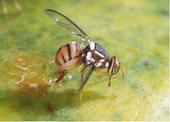
The invasive pest spotlight focuses on emerging or potential invasive pests in California. In this issue we are covering the Oriental fruit fly.
Oriental Fruit Fly Facts
The Oriental fruit fly (OFF) is an invasive pest that attacks over 230 crops including citrus and other fruits, nuts, vegetables, and berries. The short life cycle of the OFF allows rapid development of serious outbreaks, which can cause severe economic losses. Heavy infestations can cause complete losses of crops. Fruit that has been attacked may be unfit to eat as larvae tunnel through the flesh as they feed. Fungi and bacteria enter, leaving the interior of the fruit a rotten mass. Infested fruit does not always...
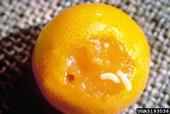
Seven invasive fruit fly quarantines are in place throughout California. If you live within one of these quarantine zones, fruits and vegetables should not be moved off the property they were grown on. Quarantines are in place for the Mediterranean fruit fly, Oriental fruit fly, tau fruit fly, and Queensland fruit fly. Smuggled, illegally imported fruit is the most common pathway of fruit fly entry into California.
These fruit flies lay their eggs under the skin of many crops, making their detection difficult. Females of some species can lay 1,000 eggs in their lifetime. Once eggs hatch, larvae (maggots) feed on the inside of the fruit. Infested fruit drops to the ground where larvae leave the fruit to burrow into the soil to...
- Author: Elaine Lander
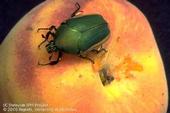
We've had many reports in the last two weeks from people asking what those big green, buzzing, beetles are. Green fruit beetles (Cotinis mutabilis) are members of the scarab beetle family and are sometimes known as fig beetles or figeater beetles. They are related to green June beetles (C. nitida) which are more commonly found in the South Eastern United States.
Green fruit beetles have a metallic green color and can be up to 1 1/3 inches long with prominent legs and antennae. The adults eat maturing soft fruit like figs and stone fruits, while the larvae (grubs) are found in compost or other decomposing matter. More on these occasional pests can be found on...
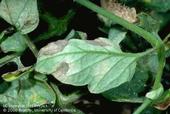
As you practice social distancing during COVID-19, you may find yourself spending more time in the garden. As we move into nice weather, we are sharing a few gardening tips for pest management.
Powdery Mildew
Check for signs of powdery mildew on fruit trees, landscape ornamentals, and vegetables. Symptoms can vary by plant species but common symptoms include white powdery spots developing on both sides of the leaf, leaves that turn yellow or brown and fall off, twisting and distortion of leaves and shoot. Prune out small infestations and remove infected material to reduce spread.
For more on this...
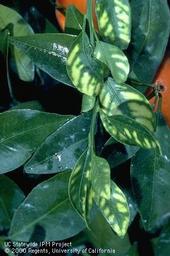
As you practice social distancing during COVID-19, you may find yourself spending more time in the garden. As we move into nice weather, we are sharing a few gardening tips for pest management.
Fertilizing
Now is the time to fertilize caneberries, citrus, fruit trees, palms, and heavily-flowering shrubs with slow release products. Maintaining good fertilization can keep your plants vigorous and help prevent pest problems.
Read more about plant-specific fertilization information on our website and see our other April gardening tips on


